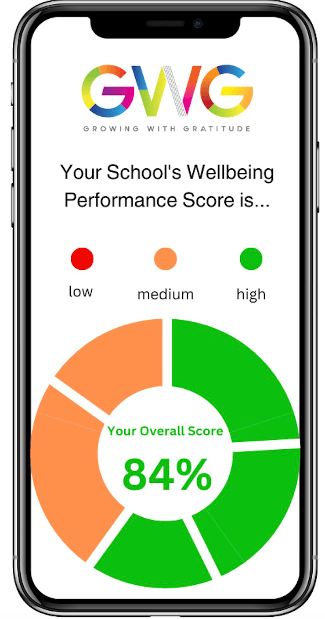You’ll be scored against the following key areas:

Whole School Integration
This category evaluates how well wellbeing initiatives are embedded across all aspects of the school environment—from policies and culture to daily routines and school-wide events. It assesses the extent to which wellbeing is a fundamental part of the school's operations, affecting everyone connected to the school. Effective integration means that wellbeing is not treated as an add-on but is central to the schools ethos and is reflected consistently in every action the school takes.

Staff
The Staff category focuses on the wellbeing support provided to teachers and all school staff members. It examines the resources available for staff mental wellbeing, the training they receive to manage their own wellbeing and to support students, and the overall work environment. This category also looks at how staff perceive their support and the measures in place to prevent staff burnout. High scores indicate a supportive work environment that values staff wellbeing as crucial for the overall health of the school community.

Students
In the Students category, the scorecard measures the effectiveness of the school's efforts to support the mental, emotional, and social wellbeing of its students. This includes the availability and quality of mental health resources, initiatives to enhance students' emotional intelligence, the promotion of a sense of belonging, and inclusivity. It also assesses how well students are involved in wellbeing decisions and the extent to which physical activities are utilised to boost mental health. A high score in this category signifies a supportive and proactive approach to addressing the diverse wellbeing needs of students.



